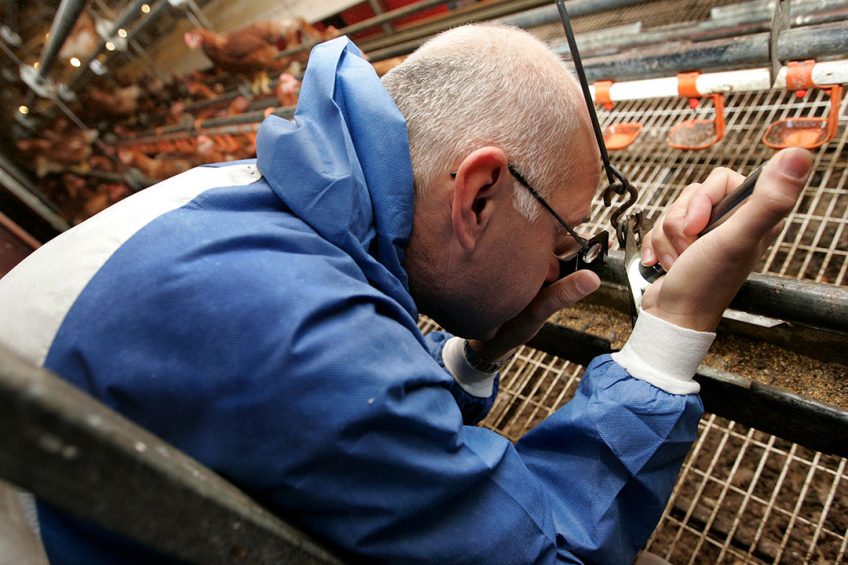Chicken red mites go under the microscope

Chicken red mites are being put under the microscope again thanks to a funding boost awarded to a Scottish research institute.
Almost half a million pounds have been put in the kitty of Moredun Research Institute near Edinburgh to further study the red mites but to reduce the number of hens infested for such work. Poultry red mites, which are a huge problem to any poultry farmer, are parasites which need to feed on the blood of a bird to survive, develop and reproduce. Infestation of hen houses with poultry red mites is a major animal welfare and economic problem for the egg-producing industry internationally, and multiple groups worldwide are working to develop new control methods.
Infested hens
In order for any research programme to be undertaken, donor hens must be infested with the parasite to provide sufficient numbers of mites for subsequent laboratory or field studies. Therefore, the aim of the research funded by the £483,000 grant from the National Centre for the Replacement, Refinement and Reduction of Animals in Research (NC3Rs) is to establish a laboratory colony of red mites and develop a novel feeding method which removes the need to use infested hens.
Dr Francesca Nunn, who this year received the prestigious International 3Rs Prize from the NC3Rs for work related to this study, said: “This is an exciting project that not only has the potential to seriously reduce the numbers of experimental hens used in poultry red mite colony maintenance, but also to increase our understanding of the feeding behaviour and population dynamics that will be greatly useful in future control strategies against this important parasite. I am thrilled to be working with the NC3Rs once more.” Through a series of preliminary experiments, researchers have established that poultry red mites will feed on goose blood through a disposable synthetic skin-like membrane.
 Wearable sensor technology to detect poultry mites
Wearable sensor technology to detect poultry mites
Wearable senior technology has shown that Northern fowl mites significantly increase hen preening behaviour leading to increased skin lesions of infested birds.
Blood donors
Live geese are particularly suited to be blood donors for this task as they can supply approximately 30 times more blood than hens in a single donation. The donor geese are looked after and cared for under very high welfare standards in a dedicated blood-donor flock. By using this system, it has been deduced that the number of hens used for the maintenance of poultry red mites could be reduced by 90% per year. In addition, welfare standards will be increased by removing the need for hens to be continuously infested with the parasites for prolonged periods. This feeding method, designed by Moredun researchers in conjunction with Biomathematics and Statistics Scotland (BioSS), is both sustainable for the routine culturing of mites and can be scaled-up for the production of the large numbers of mites required for trials when required.
 Finding a vaccine for red mite
Finding a vaccine for red mite
Red mite is a pervasive pest in both the laying hen and broiler breeder sectors. It can cause significant production problems, act as a vector for disease and even increase mortality.
Reducing test animals
Dr Alasdair Nisbet, head of vaccine and diagnostic development and principal investigator of the study added: “I’m delighted to be able to continue our work on reducing the numbers of hens used for poultry red mite research and refining our approaches in this area in partnership with the NC3Rs. We look forward to another 3 years of a high level of impact in these areas.”













